Do you have a question about the Yamaha MT125 2023 and is the answer not in the manual?
Key responsibilities and advice for safe motorcycle operation, including training and maintenance.
Essential techniques and precautions for safe riding, visibility, and hazard avoidance.
Guidance on essential safety gear like helmets, jackets, boots, and gloves for rider protection.
Identification of key parts visible from the motorcycle's left side.
Identification of key parts visible from the motorcycle's right side.
Location and identification of handlebar controls and dashboard instruments.
Explanation of the traction control system's function, operation, and reset.
Guide to pairing the vehicle's CCU with a smartphone via Bluetooth for notifications.
Operation of the ignition switch for starting, lighting, and steering lock.
Functions of left and right handlebar switchgear for lights, horn, and signals.
Understanding warning lights, dashboard display, meters, and various icons.
Operation of clutch, shift, and brake levers/pedals, including ABS.
Components and operation of the fuel tank, fuel system, canister, and catalytic converter.
Guidelines for the initial 1000 km to ensure proper engine wear-in and longevity.
Steps for starting the engine, including safety checks and parking procedures.
How to shift gears, decelerate, and tips for improving fuel consumption.
Overview of emission control and general maintenance schedules with intervals.
Procedures for checking engine oil, coolant, air filter, and spark plug.
Maintenance for tires, wheels, drive chain, suspension, steering, and bearings.
Checks and adjustments for brake levers, pedals, pads, fluid, and switches.
Maintenance for battery, fuses, lights, and general troubleshooting guidance.
Guidelines for washing, drying, and special care for different finishes.
Instructions for storing the vehicle and maintaining the battery's condition.
Technical specifications for dimensions, engine, and fuel system.
Specifications for gear ratios, tire sizes, and wheel types.
Technical details on brakes, suspension, electrical system, and lighting.
Location and importance of VIN, engine serial number, and model label.
Information on diagnostic connectors, vehicle data recording, and privacy policy.
Key responsibilities and advice for safe motorcycle operation, including training and maintenance.
Essential techniques and precautions for safe riding, visibility, and hazard avoidance.
Guidance on essential safety gear like helmets, jackets, boots, and gloves for rider protection.
Identification of key parts visible from the motorcycle's left side.
Identification of key parts visible from the motorcycle's right side.
Location and identification of handlebar controls and dashboard instruments.
Explanation of the traction control system's function, operation, and reset.
Guide to pairing the vehicle's CCU with a smartphone via Bluetooth for notifications.
Operation of the ignition switch for starting, lighting, and steering lock.
Functions of left and right handlebar switchgear for lights, horn, and signals.
Understanding warning lights, dashboard display, meters, and various icons.
Operation of clutch, shift, and brake levers/pedals, including ABS.
Components and operation of the fuel tank, fuel system, canister, and catalytic converter.
Guidelines for the initial 1000 km to ensure proper engine wear-in and longevity.
Steps for starting the engine, including safety checks and parking procedures.
How to shift gears, decelerate, and tips for improving fuel consumption.
Overview of emission control and general maintenance schedules with intervals.
Procedures for checking engine oil, coolant, air filter, and spark plug.
Maintenance for tires, wheels, drive chain, suspension, steering, and bearings.
Checks and adjustments for brake levers, pedals, pads, fluid, and switches.
Maintenance for battery, fuses, lights, and general troubleshooting guidance.
Guidelines for washing, drying, and special care for different finishes.
Instructions for storing the vehicle and maintaining the battery's condition.
Technical specifications for dimensions, engine, and fuel system.
Specifications for gear ratios, tire sizes, and wheel types.
Technical details on brakes, suspension, electrical system, and lighting.
Location and importance of VIN, engine serial number, and model label.
Information on diagnostic connectors, vehicle data recording, and privacy policy.
| Engine Type | Liquid-cooled, 4-stroke, SOHC, 4-valves |
|---|---|
| Displacement | 124.7cc |
| Bore x Stroke | 52.0 mm x 58.6 mm |
| Compression Ratio | 11.2:1 |
| Maximum Power | 11.0 kW (15.0 PS) @ 9, 000 rpm |
| Fuel System | Fuel Injection |
| Ignition System | TCI |
| Transmission | Constant mesh, 6-speed |
| Final Drive | Chain |
| Front Brake | Hydraulic single disc, Ø 292 mm |
| Rear Brake | Hydraulic single disc, Ø 220 mm |
| Overall Length | 1, 960 mm |
| Overall Width | 800 mm |
| Overall Height | 1, 065 mm |
| Seat Height | 810 mm |
| Wet Weight | 142 kg |
| Lubrication System | Wet sump |
| Starter System | Electric |
| Frame | Diamond |
| Maximum Torque | 11.5 Nm (1.17 kgf-m) @ 8, 000 rpm |
| Front Suspension | Telescopic fork |
| Rear Suspension | Swingarm |
| Front Tyre | 100/80-17 M/C 52S |
| Rear Tyre | 140/70-17 |
| Oil Tank Capacity | 1.15 L |
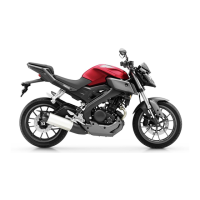
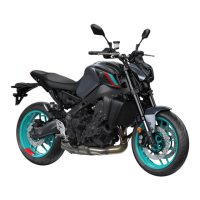


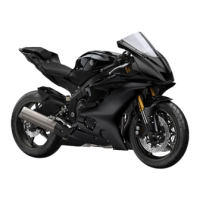
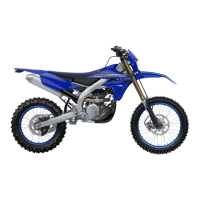

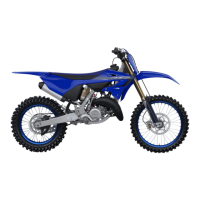
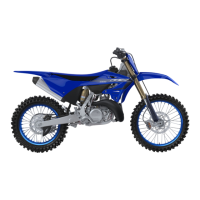

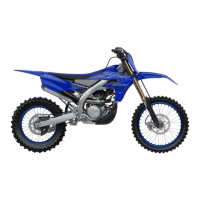
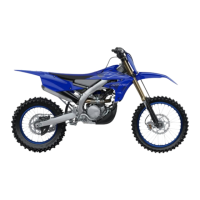
